Lawn Disease Control in Lancaster, Harrisburg, & Surrounding Areas
Fix the Problem Now, Before It Gets Worse
Even if your lawn is properly fertilized and treated for weeds and insects, it is still not protected completely from lawn disease damage. Due to certain environmental conditions and cultural practices, lawn diseases may damage your yard at different times throughout the year.
If you suspect or are concerned about damage to your lawn, disease control can be a possibility worth considering.
Here are some of the most common lawn diseases we often see and treat during the spring and early summer months.

Brown Patch: What It Is
Brown Patch is a hot, humid weather disease and is most common on short-cut grass. In severe cases, the irregular-shaped patches may appear sunken. When dew or moisture is present, you may also see a gray web-like material called mycelium. Brown Patch is very common on Tall Fescue and Perennial Rye grasses; however, it does not usually affect Bluegrass.
Shown: Beginning of Brown Patch Disease

How We Treat for Brown Patch
Fungicides are often used to treat Brown Patch. Suppose a property has a history of Brown Patch; it is best to apply preventative products before hot, humid weather begins. We highly recommend the use of Fungicides for this type of disease.
Shown: Results of Brown Patch Disease
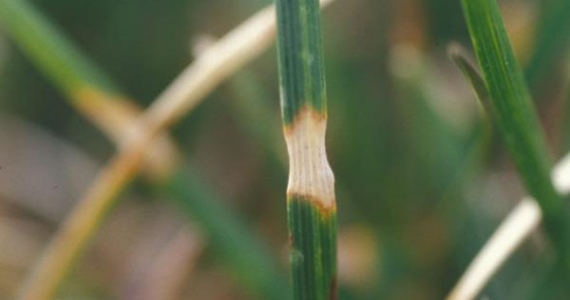
Dollar Spot: What It Is
This type of disease appears as white or tan spots of dead turf about the size of a silver dollar. Hence the name Dollar spot. On home lawns cut at 1 to 3 inches, dead areas may reach 2 to 4 inches in diameter. These spots may run together, producing large areas of dead turf. Occasionally, you may also see a gray web-like white material called mycelium. This web-like material can be seen covering affected leaves in the early morning on dew-covered grass.
Shown: Beginning of Dollar Spot Disease
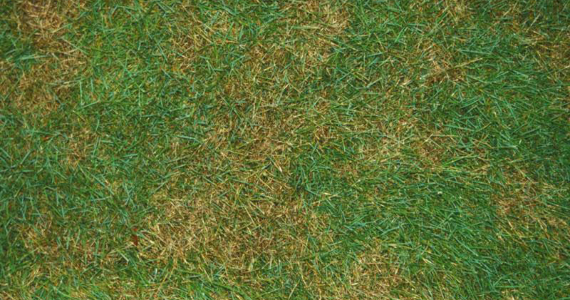
When Can Dollar Spot Occur?
Dollar Spot can occur with daytime temperatures between 70-85 degrees, cool nights around 60 degrees with periods of leaf wetness from rain, heavy morning dews, and over-irrigation. Factors that cause this disease are low fertility, compacted soils, inadequate moisture, and poor mowing heights. Fertilization will help push the disease out; however, a fungicide might be needed in severe cases.
Shown: Results of Dollar Spot Disease
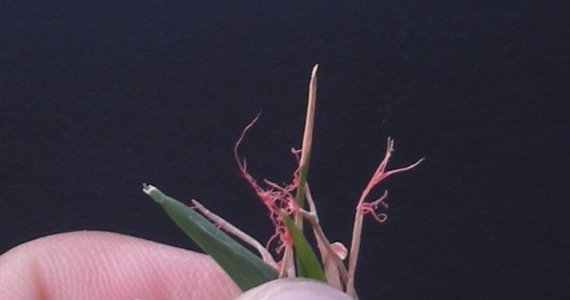
Red Thread: What It is
Red Thread is common on turf lacking good color or stresses by compaction. This type of lawn disease is most problematic on Perennial Rye and Fine Fescue grasses. Red Thread is common on turf lacking good color or stresses by compaction. The reddish-pinkish spots will turn brown as the weather changes and dries out. These brown spots mean the disease has run its course and stopped spreading. Now the grass will start to recover on its own.
Shown: Beginning of Red Thread Disease
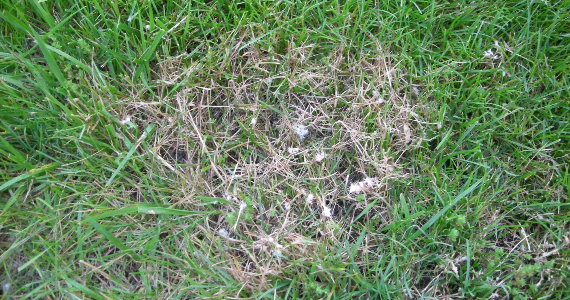
When Does Red Thread Emerge?
Red Thread can be first seen in the Spring when temperatures are between 50 – 60 degrees. You will see reddish-pink small cotton candy-like bunches on your grass blades if you look closely.
To control Red Thread, we recommend watering infrequently and deeply. It is also important to keep your mower blades sharp. Mowing at a proper height is also critical. To avoid compaction in your soil, you should aerate your lawn.
Shown: Results of Red Thread Disease

Leaf Spot: What It Is
Leaf Spot first invades the blades of your grass, producing small brown spots. The leaf blade spots expand as the disease worsens and create a dark purplish-red oval border around a tan center. Typically, this fungus becomes active during Spring’s cool, wet weather, often from April through early May. It is important to know that Leaf Spot disease can survive the winter in your lawn’s crowns, roots, turf debris, or soil. This disease will invade the grass blade first, and if conditions are favorable, it can move throughout the plant.
Shown: Beginning of Leaf Spot Disease
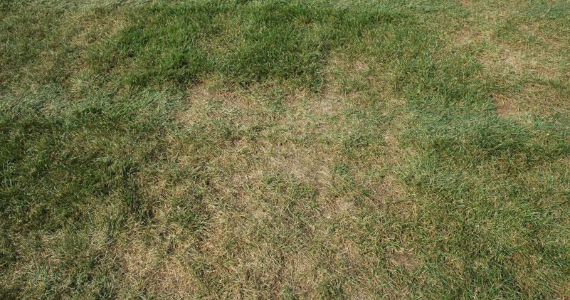
Leaf Spot Damage
Always check your mowing heights as the weather warms up to avoid plant stress. Fungicides should be applied to your lawn during the onset of this disease. If spots are completely dead, the disease has run its course and it is too late to treat.
Shown: Results of Leaf Spot Disease
"We've been using Tomlinson Bomberger for 2 years now and are very happy with the results of our lawn. What a difference!"
Wanda Heuyard
"I've used Tomlinson Bomberger for a couple years for lawn maintenance. Previously tried another lawn care service and they were unable to fix the damage caused by our blow up childrens pool. The yard looks great after care from their team."
Laura Williams
"Great company. They communicate prior to service. Yard looks great, thanks to TomBom. Recommend TomBom for all your lawn services and tree service needs"
John Lowe
